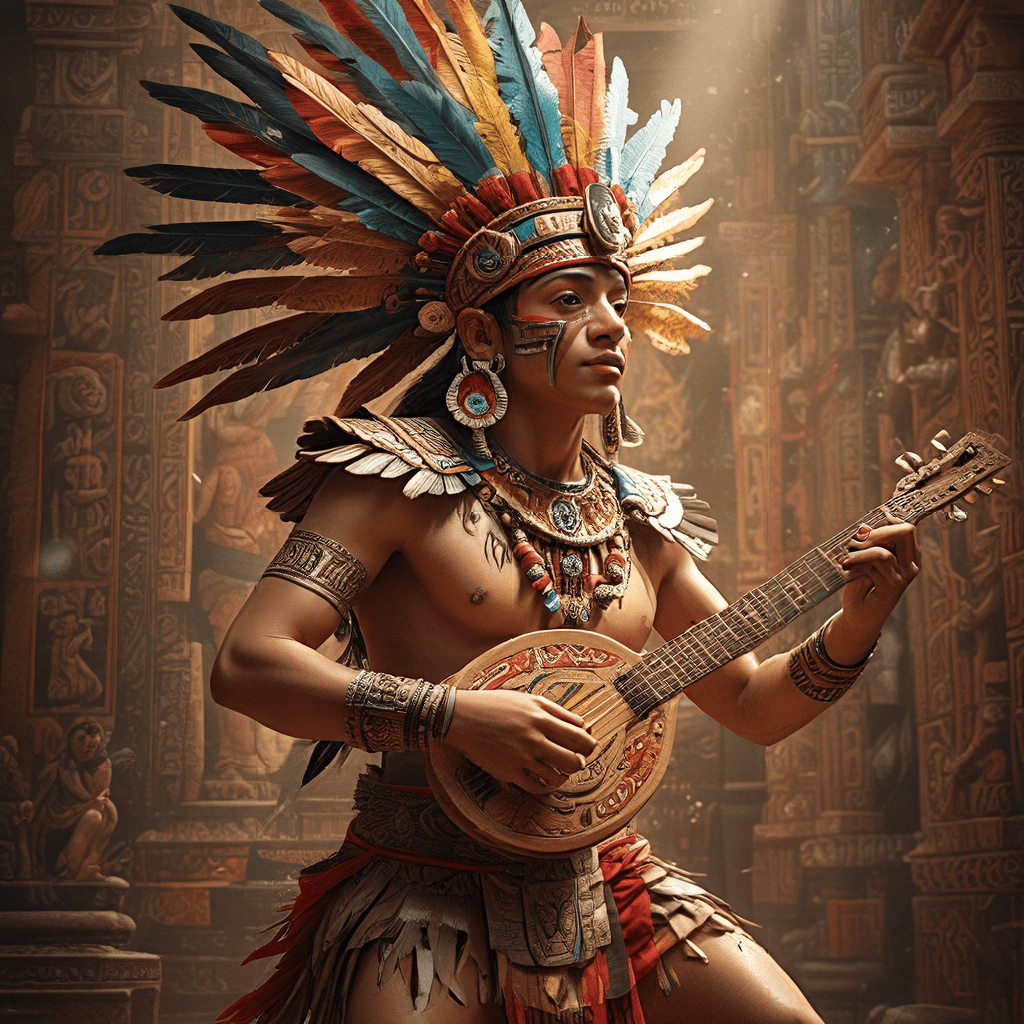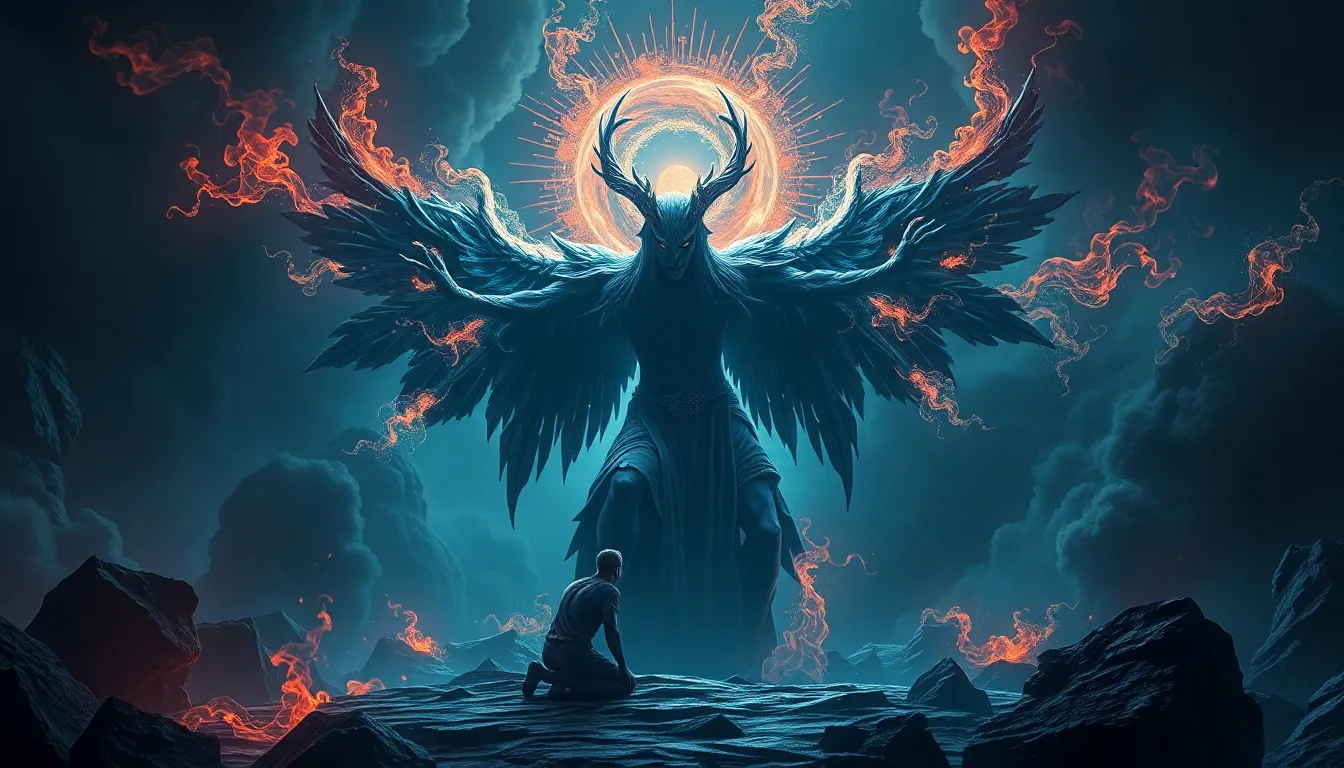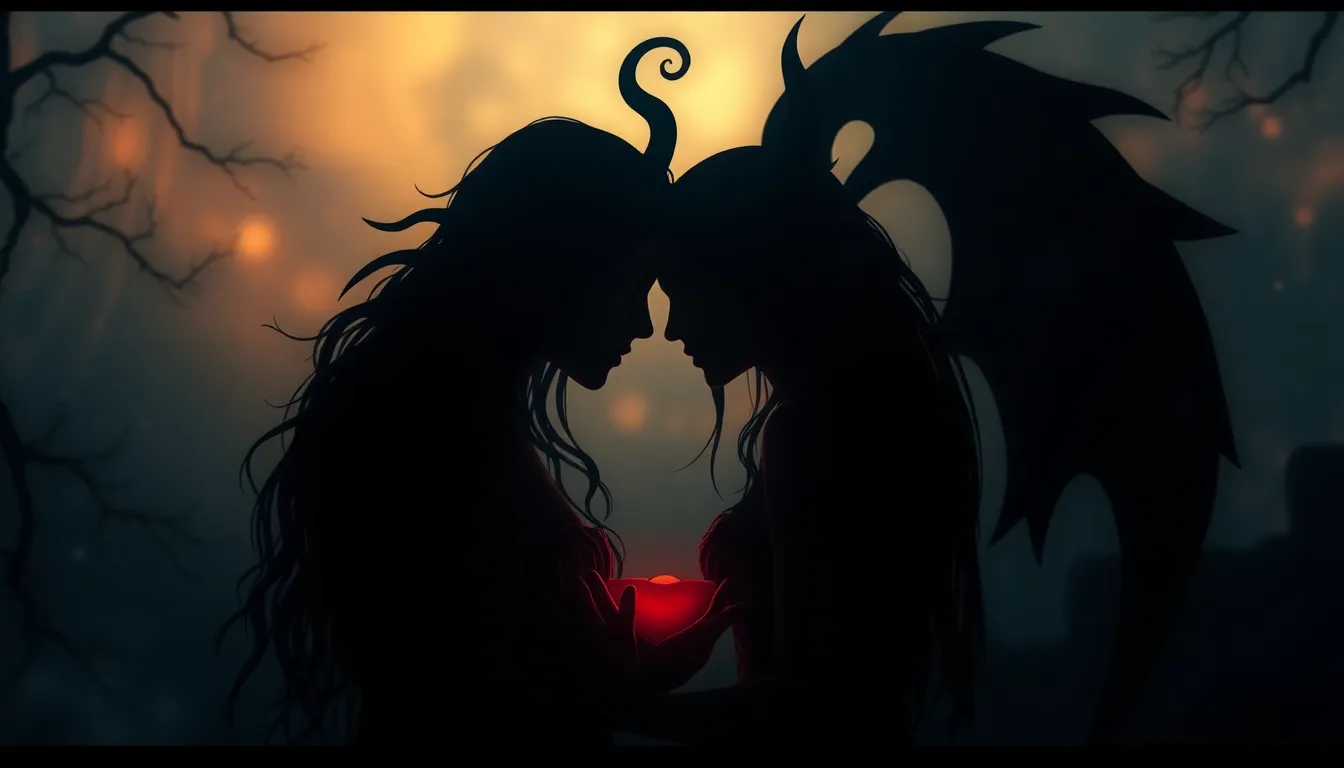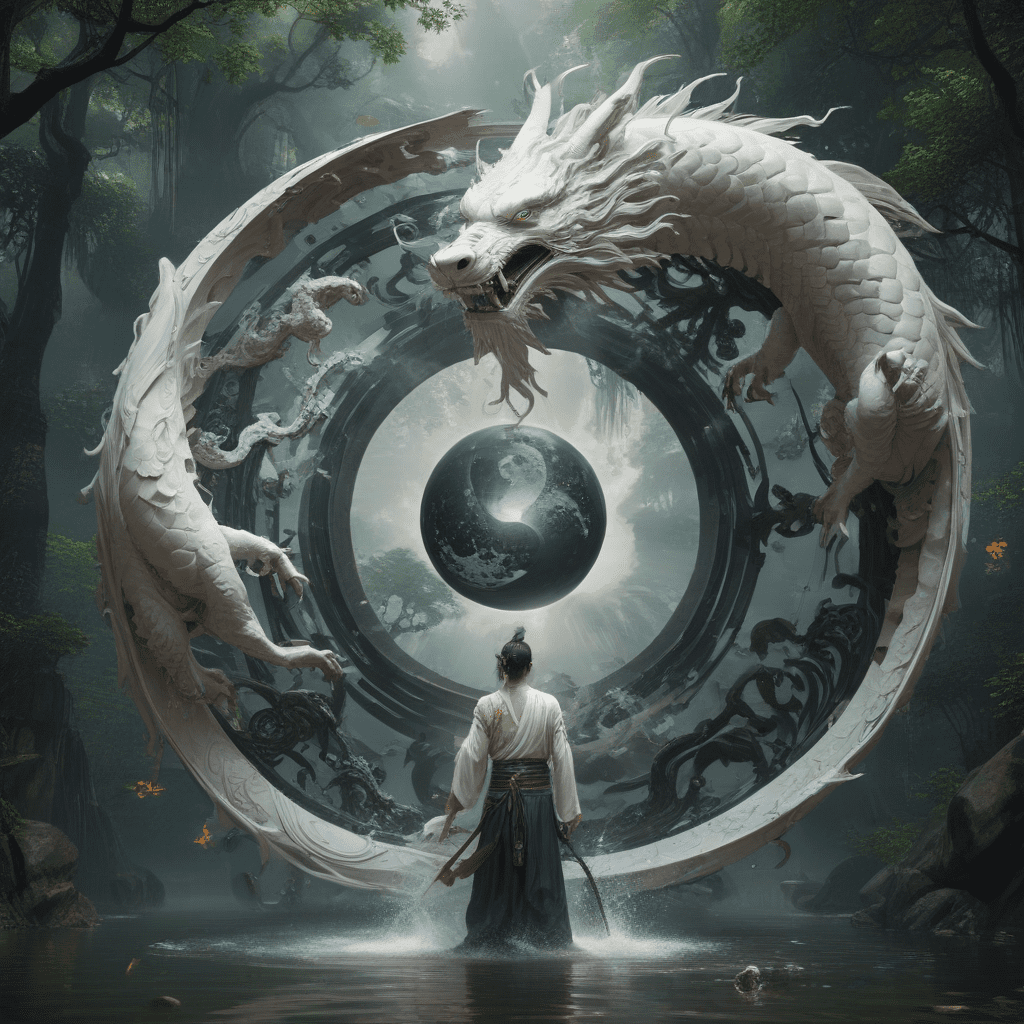Ayauhteotl: The Aztec God of Music and Dance
Ayauhteotl, a name that evokes the rhythms and melodies of a vibrant ancient culture, is a fascinating figure in Aztec mythology. He is revered as the deity of music, dance, and the arts, and his presence is deeply intertwined with the cultural fabric of the Aztec civilization. Ayauhteotl's influence extends far beyond mere entertainment, as he is believed to hold the power to connect the human realm to the divine through the creative expression of music and dance.
A Complex Deity: Music, Dance, and More
Ayauhteotl's dominion encompasses a wide array of creative pursuits. He is not only the patron of music and dance but also of singing, poetry, and other forms of artistic expression. His connection to the arts, however, is not merely superficial; it reflects a deeper understanding of the profound role that creativity plays in human life and spirituality.
In Aztec cosmology, music and dance serve as powerful tools for connecting with the divine. They are seen as sacred offerings to the gods, capable of invoking their favor and influencing the course of events. Ayauhteotl, as the embodiment of these artistic forces, becomes a conduit for divine energy, facilitating communication between the mortal and the supernatural realms.
The Dual Nature of Ayauhteotl: Patron of Both Joy and Sorrow
Ayauhteotl is a complex deity, embodying both joy and sorrow. He is associated with both the vibrant energy of celebrations and the somber contemplation of life's darker aspects. This duality reflects the multifaceted nature of the human experience, where joy and sorrow often intertwine.
While Ayauhteotl's music and dance are often associated with festivity and celebration, he is also believed to have a connection to the underworld. His presence is felt not only in the joyful rhythms of life but also in the melancholic tunes that accompany death and mourning. This dualistic nature makes him a powerful symbol of the cyclical nature of life, death, and rebirth.
The Mythical Origins of Ayauhteotl: A Powerful and Mysterious Birth
The stories surrounding Ayauhteotl's birth are shrouded in myth and legend. Some accounts suggest he was born from the tears of the goddess Coatlicue, a powerful figure associated with creation and destruction. Others depict him as the offspring of the god Tezcatlipoca, a trickster deity renowned for his cunning and mastery of illusions.
Regardless of his precise origin, Ayauhteotl's birth is often portrayed as a miraculous and transformative event, marking the emergence of a powerful deity who holds sway over the creative forces of the universe.
Ayauhteotl’s Role in Aztec Rituals: Music and Dance as Sacred Expression
Ayauhteotl's influence is deeply interwoven with Aztec rituals, where music and dance are central elements of religious practice. He is believed to preside over ceremonies dedicated to honoring the gods, seeking their favor, and ensuring the prosperity of the community. In these rituals, music and dance are not simply forms of entertainment but powerful expressions of faith, devotion, and connection to the divine.
The rhythm of drums, the melodies of flutes, and the graceful movements of dancers serve as offerings to the gods, communicating the desires and aspirations of the people. Ayauhteotl, as the guardian of these sacred traditions, empowers the faithful to engage in a dialogue with the divine through the language of music and dance.
The Iconography of Ayauhteotl: Instruments, Animals, and Symbols
Ayauhteotl's visual representation is rich in symbolism, reflecting his multifaceted nature and the various aspects of his domain. He is often depicted holding various musical instruments, a testament to his role as the patron of music and dance. These instruments include drums, flutes, and rattles, all of which play vital roles in Aztec rituals and ceremonies.
Beyond instruments, Ayauhteotl's iconography features animals that are associated with music, dance, and artistic expression. The hummingbird, known for its vibrant colors and graceful movements, is a common symbol of Ayauhteotl. The eagle, representing strength and power, is also associated with the deity, reinforcing his connection to the divine.
Further enriching his visual representation are symbols that highlight his dualistic nature. The skull, a reminder of mortality and the cycle of life and death, underscores Ayauhteotl's connection to the underworld. The heart, symbolizing love, passion, and creativity, reflects his role as the patron of artistic expression and celebration.
Theories on Ayauhteotl’s Identity: A Multifaceted Deity
Despite being revered as the god of music and dance, Ayauhteotl's identity remains a subject of debate and interpretation among scholars and mythologists. Some argue that he is a distinct deity, while others believe he is an aspect or manifestation of another god.
One theory suggests that Ayauhteotl represents the creative force within the god Tezcatlipoca, known for his mastery of illusions and ability to shapeshift. Others propose that Ayauhteotl is a fusion of earlier deities associated with music and dance, reflecting the evolution of Aztec mythology over time.
The complex nature of Ayauhteotl's identity makes him a compelling figure for exploration and interpretation. His multifaceted nature, encompassing music, dance, joy, sorrow, and the connection between the human and divine realms, makes him a unique and powerful deity within the Aztec pantheon.
Ayauhteotl as a Representation of Artistic Creativity and Expression
Ayauhteotl serves as a powerful symbol of the importance of artistic creativity and expression within Aztec culture. He embodies the belief that music, dance, and other forms of art are not simply for entertainment but are essential for connecting with the divine, understanding the human experience, and shaping the world.
For the Aztecs, Ayauhteotl's influence extended beyond the realm of artistic pursuits. He was believed to inspire creativity in all aspects of life, from crafting tools and building homes to engaging in diplomacy and warfare. His presence served as a reminder that even the most mundane activities could be infused with a sense of purpose and beauty.
The Enduring Legacy of Ayauhteotl: Music and Dance in Modern Aztec Culture
Despite the fall of the Aztec empire, Ayauhteotl's legacy continues to resonate in modern-day Mexican culture. Music and dance, central to his domain, remain vital elements of traditional ceremonies, festivals, and everyday life. The vibrant rhythms of traditional Aztec music, the graceful movements of ceremonial dances, and the artistry of folk crafts all pay homage to the deity who embodies creative expression.
While the worship of Ayauhteotl may have faded with the decline of the Aztec empire, his influence persists in the rich cultural tapestry of Mexico. His legacy reminds us of the enduring power of music and dance to connect us to our past, our heritage, and our spiritual selves.
The Importance of Studying Ayauhteotl: Understanding Aztec Cosmology and Beliefs
Studying Ayauhteotl is crucial for gaining a deeper understanding of Aztec cosmology and beliefs. His role as the god of music and dance reveals a great deal about the importance of creativity, artistic expression, and ritual practice in their lives. His connection to the divine, the underworld, and the cyclical nature of life and death further illuminates the complex and multifaceted nature of Aztec spirituality.
By exploring the myths and legends surrounding Ayauhteotl, we gain insight into the worldview of the Aztecs, their understanding of the world, their relationship with the divine, and the way they navigated the complexities of human existence.
FAQ
- Q: Did the Aztecs have a written language?
- A: Yes, the Aztecs used a system of glyphs known as "writing" to record their history, beliefs, and important events.
- Q: What are some of the most important Aztec gods?
- A: Some of the most important Aztec gods include Huitzilopochtli (god of war and the sun), Quetzalcoatl (god of knowledge and the wind), Tlaloc (god of rain and agriculture), and Tezcatlipoca (god of magic and illusions).
- Q: What is the relationship between music and the divine in Aztec culture?
- A: Music was seen as a powerful tool for connecting with the divine. The Aztecs believed that music could invoke the favor of the gods and influence the course of events.
- Q: What is the significance of the skull and heart in Ayauhteotl's iconography?
- A: The skull symbolizes mortality and the cycle of life and death, while the heart represents love, passion, and creativity. Together, they highlight Ayauhteotl's dualistic nature as a deity associated with both joy and sorrow.
- Q: How does Ayauhteotl's legacy continue to influence Mexican culture today?
- A: Music and dance, central to Ayauhteotl's domain, remain vital elements of traditional ceremonies, festivals, and everyday life in modern Mexican culture.



